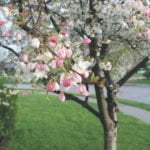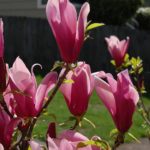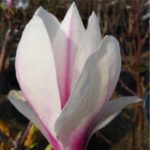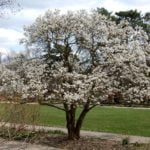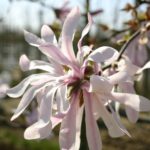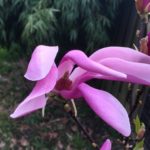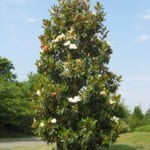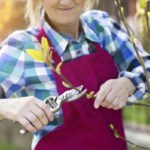Magnolia represents the decorative tree or large bush with evergreen or deciduous, plain or smooth-edged leaves; they have bisexual large flowers of white, pink, purple, sometimes yellowish coloring with pleasant aroma. The fruit of magnolia is a cone-shaped follicle. The seeds are black, flat, with pulpy pink or red aril, hanging over the thin spermatozoon from the dehiscent follicles.
Magnolia is named after the French botanist Pierre Magnol, and numbers 62 species, growing in North and Central America, South East and East Asia, on the islands Sumatra and Java.
At first, magnolia grows slowly, and then faster, increasing by 60 cm annually. The plant endures the short-term temperature drop to -15С free of damage. It develops best on the rich fresh alluvial sandy soil. The plant is resistant to the city conditions, pest and diseases. Magnolia is propagable by seed, which lose the germination quickly. The plant is durable. It is used for solitary, block and wayside planting.
It is very important to choose the proper place for planting. The microclimate of specific place, even a single garden, has the decisive importance. Magnolia must be planted in the sunny place and protected from north and east winds. The shading in the middle zone is undesirable but quite acceptable in the South.
Magnolia care includes regular watering throughout the growing season, as this plant requires abundant moistening. Special cutting is unnecessary. You should only cut off dry branches and those growing inside the crown. Magnolia doesn’t require a winter shelter. It’s even impossible because of the large size of 3-4 year old plants.
Magnolia is propagable by seed, cuttings and with the help of inoculation. Of 3 above mentioned ways, the seed propagation is the most interesting, as the propagation by cutting and inoculation requires the presence of queen cells and a seed rootstock. The seeds of magnolia are encased in red oily membrane, protecting them from drying, which cause the loss of germinating. The autumn undersowing is optimal. The peeled seed-coats must be put in the boxes and kept in the cellar at the temperature from 0 to 6. The most resistant species should be sown in autumn, into the open ground, and covered by leaves. The seedlings, grown in the open ground, are extremely frost-resistant.






